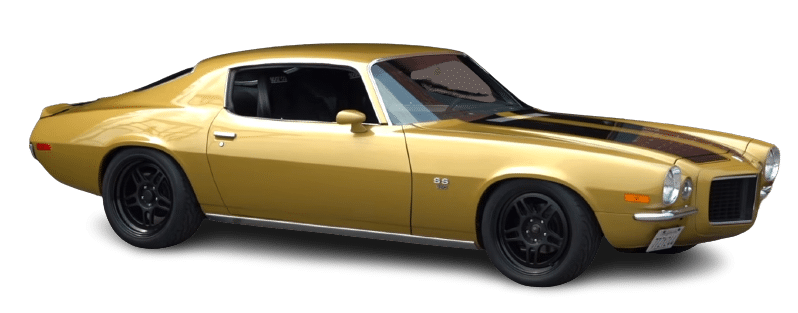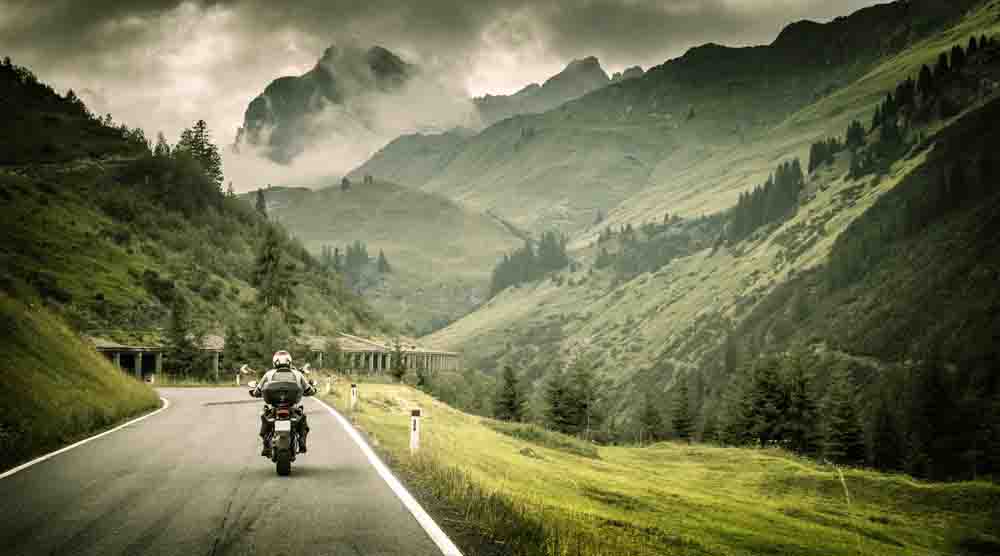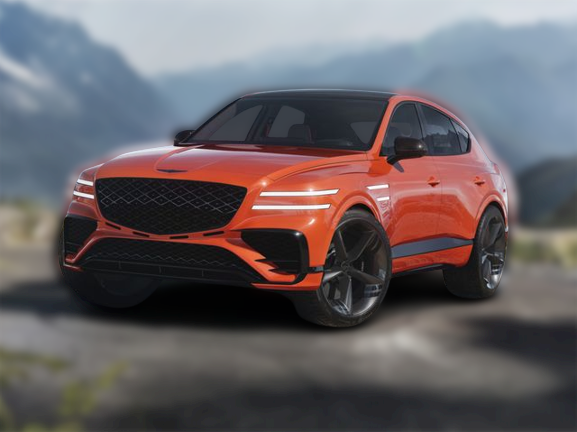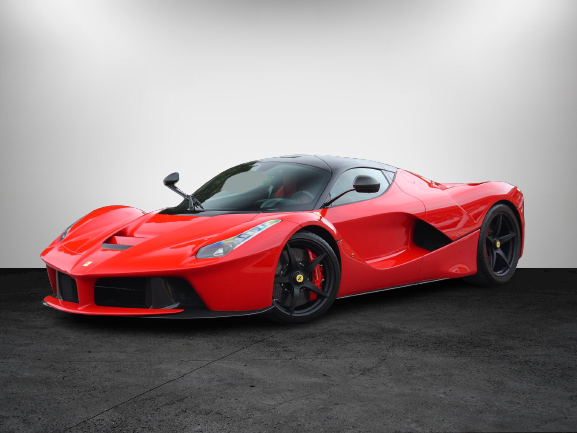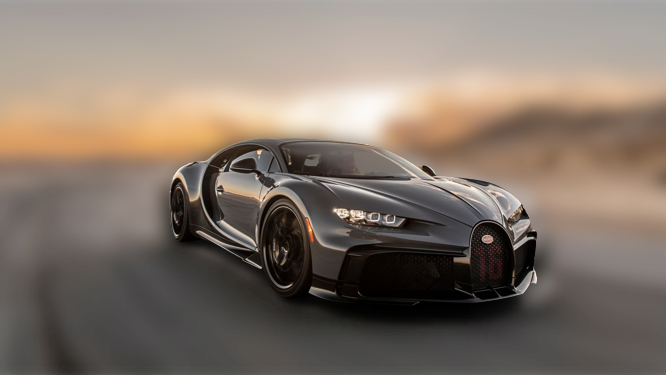If you’re a muscle car lover like me, you have likely day dreamed of cars like the 1970 Chevy Camaro. This car was a true gem in the American muscle car scene. I’ve had a privilege of driving and working on both the Super Sport and Z28 models. Both are amazing cars and live up to the hype.
This era was part of the second generation of Camaros with a designed that fully embodies power and performance, while still offering a level of comfort and luxury. The 1970 model year had made some significant updates to the Camaro’s design and performance capabilities, but we will get more into that later.
1970 Chevrolet Camaro Coupe
Design
The 1970 Camaro Coupe featured a sporty exterior design that was characterized by its long hood, short deck, and fastback roofline. The front of the car featured a split grille with round headlights, while the back of the car featured a pair of taillights that were integrated into the bumper. The Coupe package also included features such as front and rear spoilers, as well as a choice of body-colored or blacked-out exterior trim.
Under the Hood
Under the hood, the 1970 Camaro Coupe was powered by a 250 cubic inch inline-6 engine, which produced 155 horsepower. This engine was mated to a choice of manual or automatic transmission, and the car was available with rear-wheel or all-wheel drive. The manual transmission was a 3-speed unit, while the automatic transmission was a 2-speed Powerglide.
Interior
Inside, the 1970 Camaro Coupe featured a spacious and comfortable interior that could seat up to four people. The interior was available with a range of optional upgrades, such as bucket seats, a center console, and a floor-mounted shifter. The Coupe also featured a range of convenience features, such as a radio, a clock, and a tachometer.
Performance
In terms of performance, the 1970 Camaro Coupe was not as powerful as some of the other packages available, such as the SS and Z28. However, it was still a capable and fun-to-drive car, especially when equipped with the manual transmission. The Coupe had a 0-60 mph time of around 9 seconds, and a top speed of around 110 mph.
My Take
Despite being the entry-level option, the 1970 Camaro Coupe was still a popular choice among car buyers looking for a stylish and affordable sports car. It was a strong competitor in the pony car market, which included other popular muscle cars such as the Ford Mustang and the Plymouth Barracuda. Overall, the 1970 Camaro Coupe was a well-rounded car that offered a good balance of style, performance, and value.
1970 Chevrolet Camaro RS Rally Sport
The 1970 Chevrolet Camaro RS, or Rally Sport, was a package offered on the second generation of Camaros, which were produced from 1970-1981. The RS package was a mid-level option that offered a mix of style and performance enhancements over the base Coupe package.
Design
One of the most notable features of the 1970 Camaro RS was its exterior design, which included a split front bumper and hidden headlights. This gave the car a more aggressive and sporty appearance, and it helped to set the RS apart from the base Coupe model. The RS also featured front and rear spoilers, as well as body-colored exterior trim.
Under the Hood
Under the hood, the 1970 Camaro RS was powered by a range of engine options, including a 250 cubic inch inline-6, a 302 cubic inch V8, a 350 cubic inch V8, and a 396 cubic inch V8. The inline-6 engine produced 155 horsepower, while the V8 engines produced anywhere from 200 to 375 horsepower, depending on the size and configuration. The RS was available with a choice of manual or automatic transmission, and rear-wheel or all-wheel drive.
Performance
In terms of performance, the 1970 Camaro RS was a step up from the base Coupe model. It had a 0-60 mph time of around 8 seconds, and a top speed of around 120 mph, depending on the engine and drivetrain combination chosen. The RS also featured upgraded suspension and brakes, which helped to improve handling and braking performance.
Interior
Inside, the 1970 Camaro RS featured a spacious and comfortable interior that could seat up to four people. The interior was available with a range of optional upgrades, such as bucket seats, a center console, and a floor-mounted shifter. The RS also featured a range of convenience features, such as a radio, a clock, and a tachometer.
My Take
Overall, the 1970 Camaro RS was a popular choice among car buyers looking for a stylish and performance-oriented sports car. It offered a good balance of style and performance, and it was a strong competitor in the pony car market, which included other popular muscle cars such as the Ford Mustang and the Plymouth Barracuda. The RS package remains a sought-after option for collectors and enthusiasts today.
1970 Chevrolet Camaro SS Super Sport
The 1970 Chevrolet Camaro SS, or Super Sport, was a high-performance package offered on the second generation of Camaros, which were produced from 1970-1981. The SS package was the top-of-the-line option for the 1970 Camaro, and it was designed to offer maximum style and performance.
Design
One of the most notable features of the 1970 Camaro SS was its exterior design, which included a unique hood with a scoop, as well as blacked-out exterior trim. The SS also featured front and rear spoilers, as well as a choice of body-colored or blacked-out exterior trim. These features helped to give the SS a more aggressive and sporty appearance, and they helped to set it apart from the other Camaro packages.
Under the Hood
Under the hood, the 1970 Camaro SS was powered by a 350 cubic inch V8 engine, which produced 300 horsepower. This engine was mated to a choice of manual or automatic transmission, and the car was available with rear-wheel or all-wheel drive. The manual transmission was a 4-speed unit, while the automatic transmission was a 3-speed Turbo Hydramatic.
Like the ’70s model the ’69 Camaro continues to have a cult following among muscle car collectors. Be sure to read our full guide on the 1969 Camaro SS here.
Performance
In terms of performance, the 1970 Camaro SS was the most powerful and quickest option available. It had a 0-60 mph time of around 6 seconds, and a top speed of around 140 mph, depending on the transmission and drivetrain combination chosen. The SS also featured upgraded suspension and brakes, which helped to improve handling and braking performance.
Interior
Inside, the 1970 Camaro SS featured a spacious and comfortable interior that could seat up to four people. The interior was available with a range of optional upgrades, such as bucket seats, a center console, and a floor-mounted shifter. The SS also featured a range of convenience features, such as a radio, a clock, and a tachometer.
My Take
Overall, the 1970 Camaro SS was a highly sought-after car among car buyers looking for a stylish and high-performance sports car. It was a top competitor in the pony car market, which included other popular muscle cars such as the Ford Mustang and the Plymouth Barracuda. The SS package remains a popular choice for collectors and enthusiasts today.
1970 Chevrolet Camaro Z28
The 1970 Chevrolet Camaro Z28 was a high-performance package offered on the second generation of Camaros, which were produced from 1970-1981. The Z28 package was designed for track use, and it was the most performance-oriented option available for the 1970 Camaro.
Design
One of the most notable features of the 1970 Camaro Z28 was its exterior design, which included a unique hood with a scoop, as well as blacked-out exterior trim. The Z28 also featured front and rear spoilers, as well as a choice of body-colored or blacked-out exterior trim. These features helped to give the Z28 a more aggressive and sporty appearance, and they helped to set it apart from the other Camaro packages.
Under the Hood
Under the hood, the 1970 Camaro Z28 was powered by a 302 cubic inch V8 engine, which produced 290 horsepower. This engine was mated to a 4-speed manual transmission, and the car was available with rear-wheel drive only. The Z28’s engine was designed to rev high and produce a lot of power, making it well-suited for track use.
Performance
In terms of performance, the 1970 Camaro Z28 was the most powerful and quickest option available. It had a 0-60 mph time of around 6 seconds, and a top speed of around 140 mph. The Z28 also featured upgraded suspension and brakes, as well as a limited-slip differential, which helped to improve handling and braking performance.
Interior
Inside, the 1970 Camaro Z28 featured a spacious and comfortable interior that could seat up to four people. The interior was available with a range of optional upgrades, such as bucket seats, a center console, and a floor-mounted shifter. The Z28 also featured a range of convenience features, such as a radio, a clock, and a tachometer.
My Take
Overall, the 1970 Camaro Z28 was a highly sought-after car among car buyers looking for a high-performance sports car that was designed for track use. It was a top competitor in the pony car market, which included other popular muscle cars such as the Ford Mustang and the Plymouth Barracuda. The Z28 package remains a popular choice for collectors and enthusiasts today.
1970 Camaro Engine Specifications
The 1970 Chevrolet Camaro was offered with a range of engine options, which varied depending on the package chosen. The base Coupe package was powered by a 250 cubic inch inline-6 engine, which produced 155 horsepower. This engine was mated to a choice of manual or automatic transmission, and the car was available with rear-wheel or all-wheel drive.
The RS, SS, and Z28 packages were all powered by V8 engines. The RS package was available with a 302 cubic inch V8, which produced 200-375 horsepower, depending on the configuration. The SS package was powered by a 350 cubic inch V8, which produced 300 horsepower. The Z28 package was only available with a 302 cubic inch V8, which produced 290 horsepower.
All of the V8 engines offered in the 1970 Camaro were designed to produce a lot of power and torque, making them well-suited for high-performance driving. The V8 engines were mated to manual transmission only, with the exception of the automatic-equipped SS, which was equipped with a 3-speed Turbo Hydramatic transmission. The manual transmissions available on the V8-powered Camaros included a 4-speed manual for the SS and Z28, and a 3-speed manual for the RS.
1970 Camaro Drivetrain Info
n addition to the engine options, the 1970 Camaro was also available with a range of drivetrain options. The Coupe and RS packages were available with rear-wheel or all-wheel drive, while the SS and Z28 were only available with rear-wheel drive. The all-wheel drive system used on the Coupe and RS was a part-time system that could be engaged when needed, such as in slippery driving conditions.
Overall, the engine and drivetrain options available on the 1970 Camaro offered a range of performance levels, from the base inline-6 engine to the high-performance V8 engines. This allowed car buyers to choose the power level that best suited their needs and preferences.
1970 Camaro Performance Statistics
The performance statistics of the 1970 Chevrolet Camaro varied depending on the engine and drivetrain combination chosen. Here are some general performance statistics for the different engine options available on the 1970 Camaro:
250 cubic inch inline-6: 0-60 mph in around 9 seconds, top speed of around 110 mph
302 cubic inch V8: 0-60 mph in around 7 seconds, top speed of around 120 mph
350 cubic inch V8: 0-60 mph in around 6 seconds, top speed of around 130 mph
396 cubic inch V8: 0-60 mph in around 5 seconds, top speed of around 140 mph
It’s worth noting that these are approximate performance numbers, and actual performance may vary depending on factors such as the specific configuration of the engine, the transmission and drivetrain chosen, and the weight of the car.
Braking Performance
In terms of handling and braking performance, the 1970 Camaro was equipped with an independent front suspension and a live rear axle, which provided a good balance of comfort and control. The SS and Z28 packages featured upgraded suspension and brakes, which helped to improve handling and braking performance even further.
Overall, the 1970 Camaro was a capable and fun-to-drive car that offered a range of performance levels to suit the needs and preferences of different car buyers. Whether you wanted a comfortable and affordable sports car or a high-performance track machine, the 1970 Camaro had something to offer.
Be sure to read our full guide on the 1969 Camaro here.
1970 Pony Car Competition
In the 1970s, the pony car market was a competitive space that included a range of high-performance muscle cars. The Chevrolet Camaro was one of the top contenders in this market, and it faced competition from other popular pony cars such as the Ford Mustang and the Plymouth Barracuda.
The 1970 Camaro was a strong competitor in the pony car market, thanks to its mix of style, performance, and value. It was offered in a range of packages that ranged from the base Coupe model to the high-performance Z28 package, giving car buyers a range of options to choose from.
The 1970 Ford Mustang was another popular pony car that offered a similar range of engine and drivetrain options to the Camaro. The Mustang was known for its sporty and agile handling, as well as its stylish design. The 1970 Barracuda was a less common sight on the roads, but it was still a formidable competitor thanks to its powerful engines and distinctive design.
Anyone involved in the pony car market during the 1970 would likely agree that they were in a competitive space that included a range of high-performance muscle cars, all of which were designed to appeal to car buyers looking for style, performance, and value. The Camaro, Mustang, and Barracuda were all strong contenders in this market, and each one had its own unique features and appeal.




